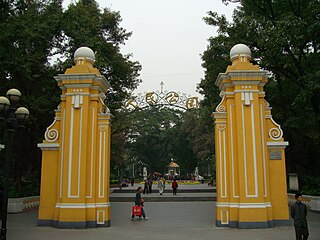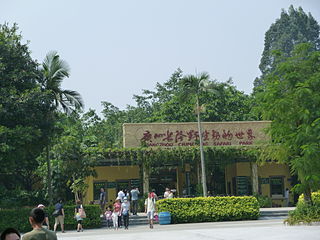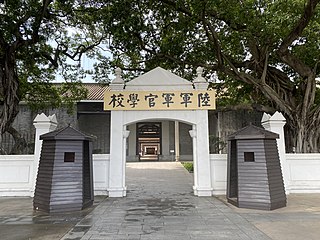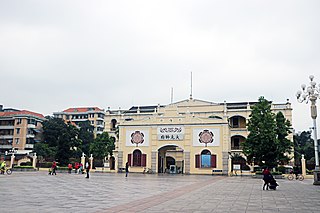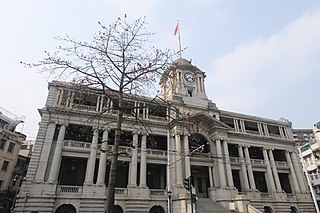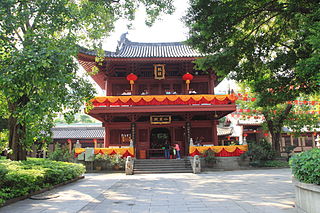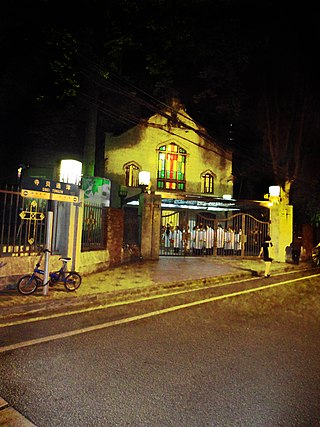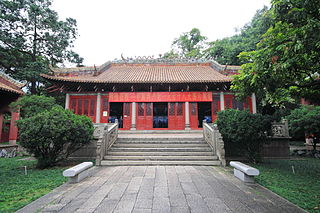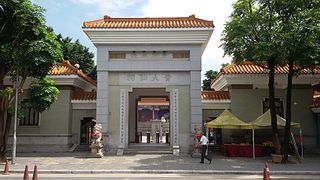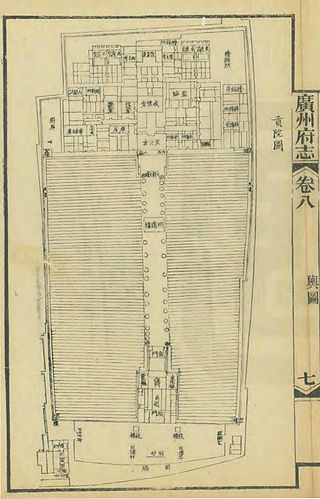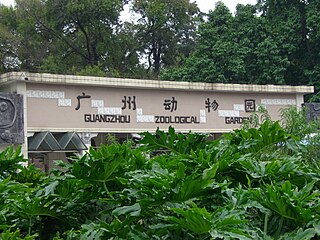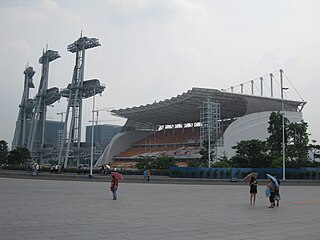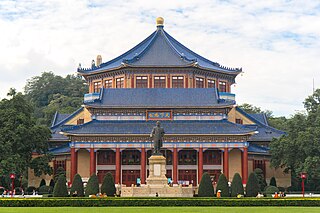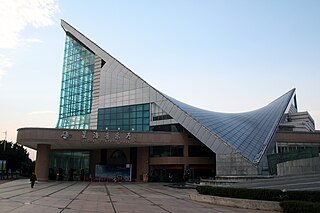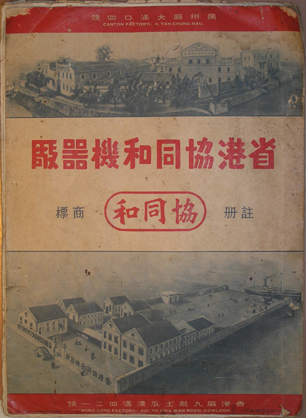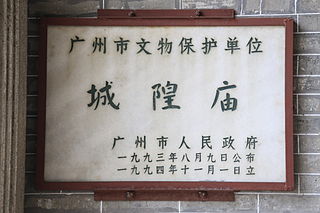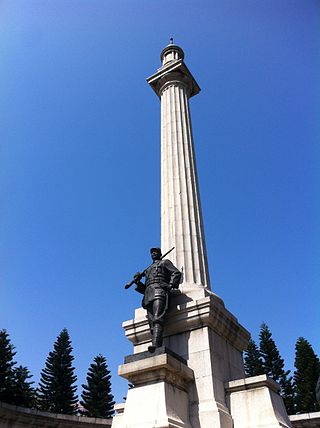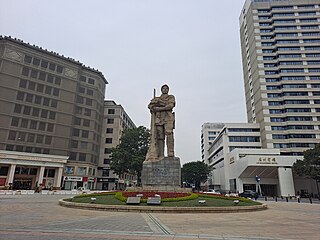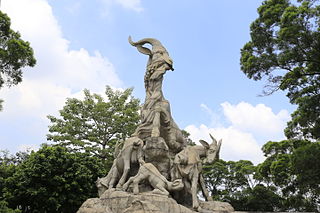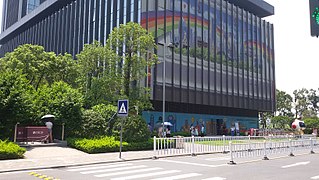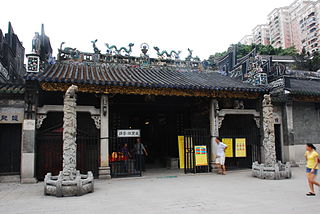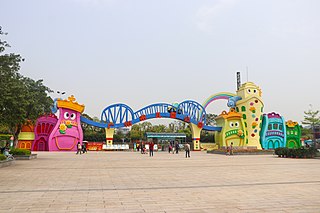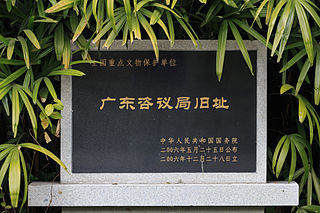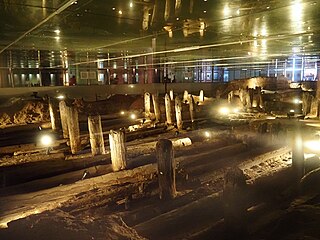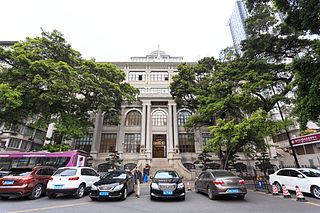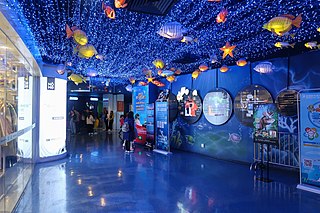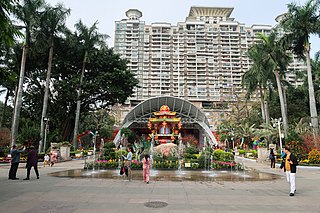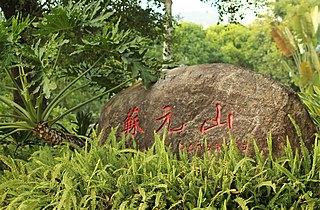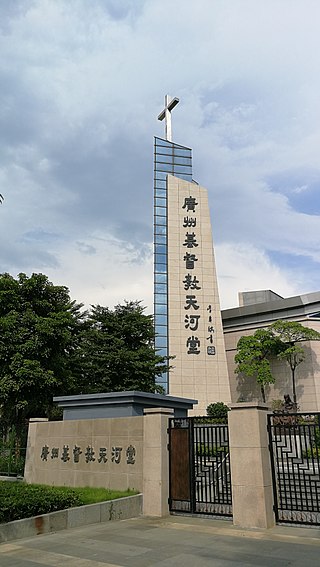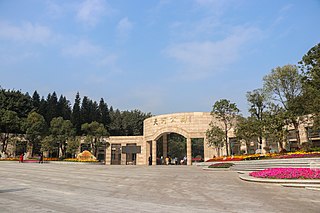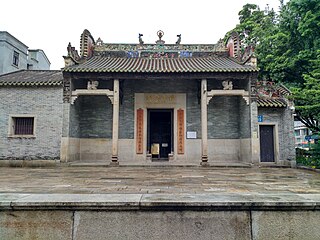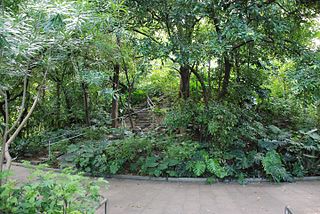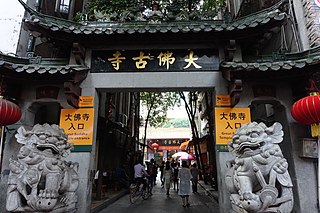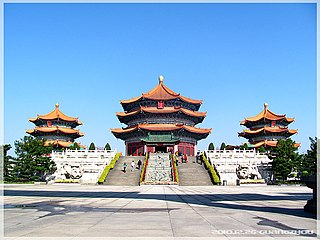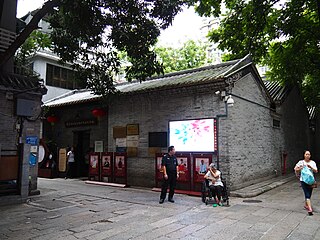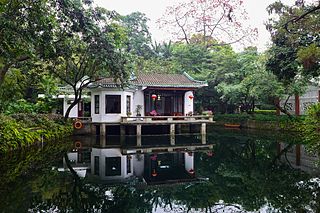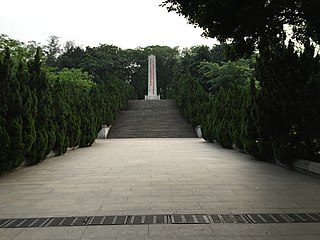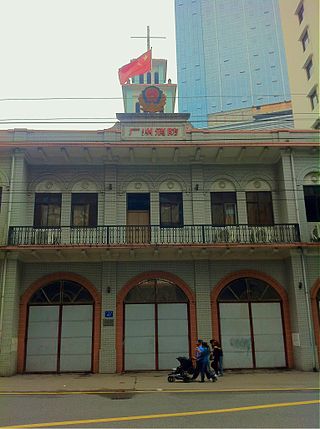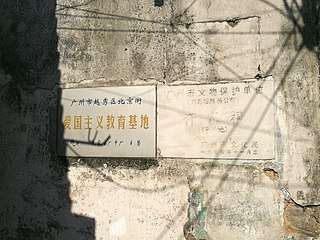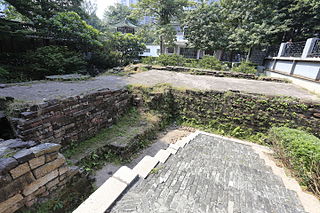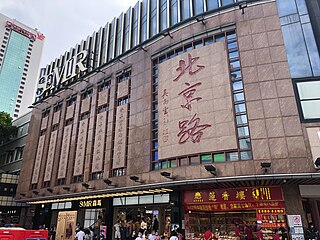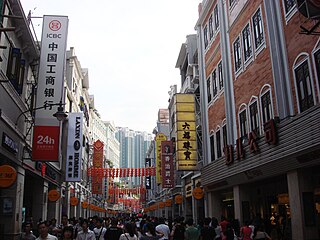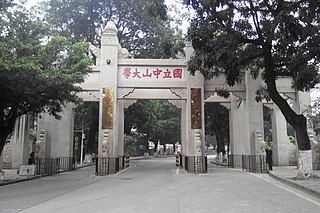55 Sights in Guangzhou, China (with Map and Images)
Legend
Premium Sights
Book tickets, guided tours and activities in Guangzhou.
Guided Free Walking Tours
Book free guided walking tours in Guangzhou.
Welcome to your journey through the most beautiful sights in Guangzhou, China! Whether you want to discover the city's historical treasures or experience its modern highlights, you'll find everything your heart desires here. Be inspired by our selection and plan your unforgettable adventure in Guangzhou. Dive into the diversity of this fascinating city and discover everything it has to offer.
Sightseeing Tours in GuangzhouActivities in GuangzhouPeople's Park is an urban public park in Yuexiu District in central Guangzhou, capital of Guangdong province in south China. Established in 1921, it is the first public park in the city, built on the site that had been the location of successive regional governments since the Sui dynasty. Due to its central location, it is colloquially called Central Park (中央公园).
Chimelong Wildlife World (formerly known as Heung Kong Wildlife World) is located in Dashi Street, Panyu District, Guangzhou City, Guangdong Province, People's Republic of China, which was inaugurated and opened on December 26, 1997, covering an area of about 800 hectares, introducing more than 500 species and nearly 20,000 animals, making it the largest private zoo in Asia and rated as one of the first national 5A tourist attractions in China.
3. Huaisheng Mosque
The Huaisheng Mosque is the main mosque of Guangzhou. Rebuilt many times over its history, it is traditionally thought to have been originally built over 1,300 years ago, which would make it one of the oldest mosques in the world.
4. Chimelong Paradise
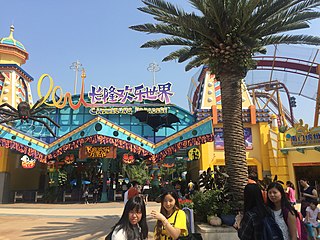
Chimelong Paradise is a major amusement park in Panyu District, Guangzhou, Guangdong, China. Opened on April 12, 2006, Chimelong Paradise is the largest amusement park in China and boasts the 10 Inversion Roller Coaster, which prior to the opening of The Smiler at Alton Towers, England shared the record for most inversions with Colossus at Thorpe Park in Surrey, England. It is classified as a AAAAA scenic area by the China National Tourism Administration.
5. Memorial of the Original Site of Whampoa Military Academy
The former site of the Huangpu Military Academy is located in Changzhou Island, Huangpu District, Guangzhou City, China, and is the first site of the new military and political school "Chinese Kuomintang Army Military Academy" (Huangpu Military Academy) founded by Sun Yat-sen, including the school headquarters, Premier Sun Memorial Room, Premier Sun Monument, club, swimming pool and other buildings, with a total area of about 57,000 square meters. In June 1984, it was turned into a memorial hall and became a well-known tourist attraction in Guangzhou.
6. The Memorial Museum of Generalissimo Sun Yat-sen's Mansion
The Memorial Hall of Generalissimo Sun Yat-sen's Mansion, located at No. 18, Dongsha Street, Textile Road, Haizhu District, Guangzhou City, Guangdong Province, is a heritage memorial hall based on the national key cultural relics protection unit "the former site of the Generalissimo Mansion of Guangzhou". It was formerly the Generalissimo Mansion of Guangdong, built here by Sun Yat-sen in 1917. It was officially opened to the public on May 1, 2006.
7. Canton Custom House
Guangdong Customs Building, commonly known as the Great Bell Tower, is located in Yanjiang West Road, Liwan District, Guangzhou City, People's Republic of China, built in 1916, is a landmark building in the Long Causeway Commercial and Trade Zone in Guangzhou, and is also a model of modern Western architecture in Guangzhou. The original arch door on the "Cantonese Customs" three words, after 1949 had been changed to "Guangzhou Customs", after the restoration is now changed back to "Cantonese Customs", the English name in accordance with the Latin tradition to V instead of U into the word "", is now a national key cultural relics protection unit.
8. Guangxiao Temple
Guangxiao Temple is one of the oldest Buddhist temples in Guangzhou, the capital of China's Guangdong Province. As the special geographical position, Guangxiao Temple often acted as a stopover point for Asian missionary monks in the past. It also played a central role in propagating various elements of Buddhism, including precepts school, Chan (Zen), Shingon Buddhism, and Pure Land. In this temple, Huineng, the sixth Chinese patriarch of Chan Buddhism, made his first public Chan lecture and was tonsured, and Amoghavajra, a Shingon Buddhist master, gave his first teaching of esoteric Buddhism. Many Buddhist scriptures were also translated here, including those translated by Yijing and the Shurangama-sūtra translated by Paramitiin (般剌密諦).
9. Site of The 1st National Congress of Kuomintang of China
For the first time of the National Congress of the Chinese Kuomintang, the former National Congress was located in the auditorium of the bell tower on the east side of the East Zhongshan Library of Civilization Road, Yuexiu District, Yuexiu District, Guangzhou. It is a national key cultural relics protection unit. The first National Congress of the Chinese Kuomintang was held in the auditorium of the bell tower from January 20th to 30th, 1924. The auditorium has now resumed the original state of the conference. On the front podium, there are portraits of Sun Yat -sen. The left side of the portrait is the Chinese Kuomintang party flag and the Republic of China flag on the right.
10. Dongshan Christian Church
Dongshan Church, full name Dongshan Christian Church, formerly Tung Shan Baptist Church, is the largest Christian church in Guangzhou, China. It was founded by the Southern Baptist Convention in 1908, and is now a Guangzhou Historical and Cultural Heritage Protection Unit.
11. Peasant Movement Institute
The Peasant Movement Training Institute or Peasant Training School was a school in Guangzhou, China, operated from 1923 to 1926 during the First United Front between the Nationalists and Communists. It was located in a former Confucian temple built in the 14th century. The site now houses a museum to Guangzhou's revolutionary past.
12. Guangdong TV Tower
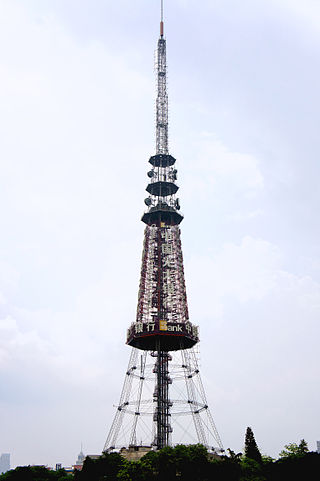
Guangdong TV Tower, also known as Yuexiu Mountain TV Tower, Guangdong TV Transmission Tower, is located in the north peak of Yuexiu Mountain, Yuexiu Park, Guangzhou, built in 1959, officially put into use on May 1, 1966, is China's first steel structure self-supporting multi-functional TV transmission tower. The tower is 200 meters high, 246.5 meters above sea level, covers an area of 8,100 square meters, with a total investment of 3.8 million yuan, and was the tallest tower in the country in the 1970s, and is also a landmark building in Guangzhou. The TV tower used to have a platform for visitors to climb the tower for sightseeing. The tower's "Guojiao 1573" advertisement, which was once the largest outdoor neon advertisement in China, was demolished in October 2009.
13. Wong Tai Sin Temple
Wong Tai Sin Temple is a major tourist attraction dedicated to Chinese deity Wong Tai Sin. Situated in the Huadi Subdistrict, Liwan District of Guangzhou, it is a Taoist temple. It is just one of many temples dedicated to Wong Tai Sin. Besides, it can be found in different parts of the world, including China, Southeast Asia, and the United States, etc. Among them, the oldest one is in Jinhua City, Zhejiang Province, China.
14. 明远楼
Guangdong Gongyuan is the place where the imperial examination township examination was held at the provincial level in Guangdong in the feudal era of China, was built in the Southern Song Dynasty, and was relocated many times in history, the 23rd year of the Kangxi Dynasty of the Qing Dynasty (1684) was located in the southeast corner of the inner city of Guangzhou, Chengenli, that is, the east end of Wenming Road, Guangzhou City, Guangdong Province, China, and its scope includes the old hall of the Guangdong Provincial Museum, the east of the Wenming Road Headquarters of the Zhongshan Library of Guangdong Province and the Guangdong Experimental Middle School. In the Qing Dynasty, the Guangdong Tribute Courtyard was called the four major tribute courtyards in China together with the Shuntian Tribute Courtyard, the Jiangnan Tribute Courtyard and the Henan Tribute Courtyard, and now only the Dragon and Tiger Wall and the Mingyuan Building remain.
15. Guangzhou Zoological Garden
Guangzhou Zoo is a zoo in Guangzhou, located in Xianlie Middle Road, Yuexiu District, Guangzhou. It was opened and opened in 1958. The zoo in Beijing and Shanghai is collectively referred to as the three major zoos in China.
16. Haixinshayayungongyuan
Haixinsha Island is an island in Tianhe District, Guangzhou, Guangdong, China. It is located to the south of Zhujiang New Town, newly developed CBD of the city, to the north of Canton Tower and to the east of Ersha Island.
17. Sun Yat-sen Memorial Hall
The Sun Yat-sen or Zhongshan Memorial Hall is an octagon-shaped building in Guangzhou, capital of China's Guangdong Province. The hall was designed by Lu Yanzhi and was built with funds raised by local and overseas Chinese people in memory of Sun Yat-sen. Construction work commenced in 1929 and completed in 1931. The hall is a large octagonal structure with a span of 71 metres (233 ft) without pillars, housing a large stage and seats 3,240 people.
18. Xinghai Concert Hall
Xinghai Music Hall is located in Guangzhou City, Guangdong Province, China on the bank of the Pearl River on Ersha Island, the music hall is named after the famous Guangdong musician Xian Xinghai during the Republic of China, covering an area of 14,000 square meters, with a construction area of 18,000 square meters, with a 1,500-seat symphony hall, a 460-seat chamber music performance hall, a 100-seat audio-visual appreciation room and a 4,800-square-meter music and culture square, which is one of the largest concert halls in mainland China. The east side of the Xinghai Music Hall is the Guangdong Art Museum, and the north side is the Guangdong Overseas Chinese Museum, forming a distinctive cultural landscape.
19. 协同和机器厂旧址
Synergy and Machinery Factory (), formerly Xietong and Rice Milling Factory, now Guangzhou Diesel Engine Factory (old site), the door plate is No. 146, Fangcun Avenue East, Liwan District. It is one of the more famous manufacturing enterprises in Guangzhou in the early days, and once produced the first diesel engine in Dazhonghua.
20. City God Temple
Guangzhou City God Temple, is a temple of worship city god in Guangzhou City, Guangdong Province, the current sign is No. 48, Zhongyou Street, Zhongshan 4th Road, Yuexiu District, was built in the Ming Dynasty Hongwu three years (1370), is the largest city god temple in Lingnan during the Ming Dynasty.
21. Yuexiu Park
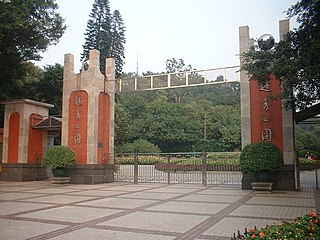
Yuexiu Hill, also known as Yut Sau Shan, Yut Sau Hill, or Mount Yuexiu, is located in Yuexiu District, Guangzhou. It once formed the northern end of the old walled city, though most of the walls have been dismantled and the city has now expanded far beyond it. Its grounds now form Guangzhou's Yuexiu Park, which remains one of the most famous tourist attractions in Guangzhou, including beautiful natural surroundings and ancient sites. It covers an area of 860,000 square meters (9,300,000 sq ft).
22. 19th Army Martyr's Park
Located at No. 113, Shuiyin Road, Yongfuzheng Street Community, Shahe Street, Tianhe District, Guangzhou City, Guangdong Province, China, the Songhu Anti-Japanese Memorial Cemetery was established by overseas Chinese to commemorate the 19th Route Army of the National Revolutionary Army of the Republic of China in the Songhu Anti-Japanese War in 1932.
23. 广州解放纪念像
The commemorative statue of Guangzhou Liberation, located in the center of Haizhu Plaza, Guangzhou, China, was built to commemorate the Liberation of the Chinese People's Liberation Army. The original author was the sculptor Yin Jichang. His creative version was destroyed during the Cultural Revolution. The current statue of the Guangzhou Liberation Memorial was rebuilt in 1979 and was re -created by Pan He and Liang Mingcheng. The commemorative statue of Guangzhou Jiefang is carved with granite, 11.5 meters high, a three -way base of 3.6 meters high, and 4.3 meters long each. The front is engraved with Ye Jianying inscribed "Guangzhou Liberation Commemorative on October 14, 1949". "All power belongs to the people" seal, respectively, standing on the base is the whole body of the soldiers holding a rifle with a rifle, a left hand holding flowers, a smile, and a vision.
24. Five-Ram statue
The stone statue of the five sheep is located on the wooden shell post on the west side of Yuexiu Park in Guangzhou, and is a stone carving created according to the legend of the five sheep in Guangzhou.
25. Dongshan Lake Park
Dongshan Lake Park (commonly known as East Lake Park) is one of the four major artificial lake parks in Guangzhou, China, located east of the North Approach Bridge of Haiyin Bridge, connecting Zhudao Hotel in the east, the Pearl River in the south, and the Guigang business district in the north. The park was built in 1958 and opened to visitors on May 1, 1959. The land area is about 12.2 hectares, and the lake area is 20.914 hectares. The park is equipped with restaurants, tea houses, dance halls, elderly activity centers, ice skating rinks and a variety of amusement facilities, and has gradually become a comprehensive park integrating sightseeing, culture and sports, entertainment and rest. "Spring Dawn on East Lake" was listed as one of the eight scenic spots in Yangcheng in 1963.
26. Museum of Guangzhou Metro
Guangzhou Metro Museum is located on the first to third floors of the podium of Tower C of Wansheng Plaza, Xingang East Road, Haizhu District, Guangzhou City, Guangdong Province, near the south side of Exit A of Wanshengwei Metro Station, established by Guangzhou Metro Group, and is one of the "2015-2016 Social and People's Livelihood Infrastructure Construction Projects" funded by the Guangzhou Municipal Government, and is also the first urban rail transit museum in South China, which opened on December 20, 2016 to present the development achievements of Guangzhou's urban construction and rail transit industry.
27. Renwei Temple
Renwei Temple is located at No. 20, Renwei Temple Front Street, Pantang Road, Liwan District (Xiguan), Guangzhou, China, and is a shrine dedicated to Emperor Zhenwu, which has now been changed to Taoism.
28. Guangzhou Children's Park
Guangzhou Children's Park, located in the middle of Baiyun New Town, Baiyun District, Guangzhou, China, is one of the parks for children in Guangzhou and the only municipal children's park in Guangzhou.
29. Huacheng Square
Huacheng Square, or Flower City Square, is the largest city square in the city of Guangzhou. The square is situated on the city axis in Zhujiang New Town, occupies a 56-square-kilometre-large (22 sq mi) area with Haixinsha Island to its south and Huangpu Avenue to its north. Guangzhou Opera House, Guangdong Museum and Guangzhou Library are also located around the square.
30. Guangxiao Christian Church
Guangxiao Church is an important Christian church in Guangzhou, China, located at No. 29 Guangxiao Road, Yuexiu District, built in 1921-1924, by the Chinese Communists in the United States themselves organized by the Chinese Gang Shen Self-Care Mission (Congregational) to invest in the construction of the church, the general director of the church, Pastor Tan Woxin. The church sits west and faces east, four floors, 26.7 meters high, 35 meters long, 23 meters wide, can accommodate more than 1,200 people to worship, is one of the largest churches in Guangzhou.
31. Guangdong Revolutionary History Museum
The Guangdong Museum of Revolutionary History is a museum established in 1959 in Guangzhou, capital of China's Guangdong Province, located on the site of former Guangdong Advisory Bureau in the Second Guangzhou Uprising Martyrs Cemetery.
32. Archaeological Site of the Wooden Watergate of Nanyue Kingdom
The site of the wooden sluice gate of the Nanyue Kingdom is located on the basement floor of Guangming Square between Xihu Road and Huifu East Road in Guangzhou, China. It is the earliest, largest and most well-preserved wooden sluice site found in the world.
33. 广东省财政厅
The Guangdong Provincial Department of Finance is a famous government building in Guangzhou, Guangdong Province, located at the north end of Beijing Road, and the building is in imitation of Western classical eclectic style. The first phase was completed in 1919. The Department of Finance of the People's Government of Guangdong Province, which was established after 1949, continues to use this building. In 1978, a complete repair was carried out. In 1993, the Guangzhou Municipal People's Government announced that it was a cultural relics protection unit in Guangzhou under the name of "Guangdong Provincial Department of Finance Building". In 2002, the Guangdong Provincial People's Government included it in the fourth batch of cultural relics protection units in Guangdong Province under the name of "the former site of the Guangdong Department of Finance".
34. Grandview Mall Aquarium
The Grandview Mall Aquarium, also known as "The Ocean World," is on the sixth floor of Grandview Shopping Mall in the city of Guangzhou, Guangdong Province, China. The aquarium is considered one of the longest in a shopping mall in China. The main tank in the aquarium is approximately 30 meters long, 3 meters wide and 3 meters high. Over 2000 fish, 200 sting rays, 30 sharks are housed within. The aquarium also includes mammals, such as the arctic fox, polar bear, walrus, beluga, and others.
35. Cultural Park
Guangzhou Cultural Park is a park located in Guangzhou, China, near the banks of the Pearl River, which is a comprehensive cultural and entertainment venue focusing on publicity and exhibition, cultural and sports activities, landscaping and amusement activities. The park covers an area of 8.3 hectares, with a green area of 1.55 hectares, and is equipped with a large open-air square, a central platform, an exhibition center, an exhibition hall, an aquatic product hall, a dolphinarium, an ice rink, a chess hall, a movie field, a bodybuilding garden, an antique garden building scenic spot, a playground and a 23-storey cultural and entertainment square under construction. Every year, three major exhibitions are held: the Spring Festival Flower Festival, the Mid-Autumn Festival Lantern Festival, and the Yangcheng Chrysanthemum Festival. Guangzhou Cultural Park is adjacent to Nanfang Building, Oi Kwan Hotel, White Swan Hotel, Shamian Island, 13 Hang, Renmin South Road and other commercial areas. Metro Line 6 and Metro Line 8 have a Cultural Park Station at the Cultural Park, which is located on the west side of the Park.
36. 苏元山
Su Yuanshan is located near Siagang Village, Huangpu District, Guangzhou City, roughly trapezoidal, is the location of the Science City Campus of Guangzhou No. 2 Middle School and Su Yuan School in Huangpu District, Guangzhou City, Su Shi is said to have lived here on the way from Yingde to Huizhou in the first year of Shaosheng (1094). In 1965, five pre-Qin bronzes were unearthed here.
37. Tianhe Christian Church
Christian Church of Guangzhou Tianhe, also known as Tianhe Church (天河堂), is a Christian TSPM Church in Guangzhou, China. It is located at No. 16-20 Daguan Middle Road, Tianhe District, and hence its name. It is considered the largest church in Guangzhou.
38. Tianhe Park
Tianhe Park (commonly known as Dongjiao Park) is located between Zhongshan Avenue and Huangpu Avenue in Yuancun, Tianhe District, Guangzhou City, China. The park covers an area of 788,000 square meters, including a water area of 100,000 square meters, and is divided into five functional areas: Baihua Scenic Area, Culture, Sports and Entertainment Area, Elderly Activity Area, Forest Rest Area, and Logistics Management Area. There are more than 100 kinds of plants such as trees, shrubs, flowers, palms, bamboos, etc., as well as more than 20 trees that are more than 100 years old and tens of thousands of square meters of water forests. The main attractions are Yuehui Garden, Deng Shichang Yiguan Mound, East Lake Pavilion, Yuexiu Garden, etc. There is a green lake in Tianhe Park, and there is a blind date corner by the green lake.
39. JinLun Guild Hall
Nylon Hall, also known as Nylon Hall, is now located on the west side of the north exit of the Kangwang Road Tunnel on Kangwang South Road, Liwan District, Guangzhou City, China. It is an ancestral hall building of the Qing Dynasty. In July 1999, it was announced as a cultural relics protection unit in Guangzhou. In November 2008, it was announced as a cultural relics protection unit in Guangdong Province.
40. Site of the four directions fort
Sifang Fort, formerly known as Yongkang Fort and Yongning Fort, is located at the top of Panlonggang, Yuexiu Mountain, Guangzhou City, China, and was an important military stronghold in the north of Guangzhou in the Qing Dynasty.
41. Big Buddha Temple
The Dafo Temple is a Buddhist temple in Guangzhou, Guangdong, China. Located in Yuexiu District, Dafo Temple is a grand temple with a history of more than one thousand years and was built by Emperor Liu Yan in the Southern Han dynasty (917–971). It has been praised as one of the "Five Largest Temples of Guangzhou" in history. Later it was destroyed and rebuilt many times. In the late Ming dynasty, the temple was declining day by day and was devastated by the war while Shang Kexi and Geng Jimao conquered Guangdong in 1649. During the reign of the Kangxi Emperor in 1663, the temple was rebuilt and expanded by Shang Kexi continuously. According to the national policy of free religious belief, the temple was approved by the Guangzhou Municipal People's Government to be restored as a Buddhist temple in 1981. Then Master Guangming, vice-president of the Guangzhou Buddhist Association, served as abbot; he tried to revitalize Dafo Temple and restore the style of the large temple. On August 9, 1993, Dafo Temple was put on the list as a Municipality Protected Historic Site by the Guangzhou Municipal People's Government.
42. 广东圆玄道观
Located in the west of Yingbin Avenue, Huadu District, Guangzhou City, Guangdong Province, China, Guangdong Yuanxuan Taoist Temple is a non-profit charitable organization funded by the Hong Kong Yuan Metaphysical Institute.
43. Memorial of the March 29th. Uprising Headquarters
The former site of the "March 29" Uprising Headquarters, that is, the former site of the Huanghuagang Uprising Headquarters. It is located at No. 15, Xiaodongying, Yuehua Road, Dufu Community, Beijing Street, Yuexiu District, Guangzhou. Next to it is Guangzhong Road Primary School (the original site of Yuehua Academy) and Xiaodongying Mosque. At present, it is a memorial hall, which is a cultural relics unit of Guangdong Province and is open to visitors free of charge.
44. Canton Orchid Garden
Located at the intersection of Jiefang North Road and Huanshi West Road in Guangzhou, China, and opposite Yuexiu Park, Guangzhou Orchid Garden covers an area of 39,000 square meters and is China's first theme park focusing on cultivating orchids, with more than 200 varieties of orchids planted. Its predecessor was the Guangzhou Herbarium.
45. 三元里抗英斗争纪念碑
The Sanyuanli Anti-British Struggle Monument is located on the upper post of the West Gate Tower of Sanyuanli Village, Baiyun District, Guangzhou City, China, and is a monument built to commemorate the Chinese soldiers and civilians who died in the Anti-British War in Sanyuanli in 1841.
46. 广州市消防局旧址
The former site of the Guangzhou Fire Bureau, now No. 49 Wenming Road, the former Central Fire Department of Guangzhou City, the former Central Fire Department of Guangzhou City, was designed in 1924 by Charles Berger, the father of modern architecture in Guangzhou, due to insufficient funds, the project dragged on for 4 years, and was not completed until 1927, costing more than 80,000 yuan.
47. 千年古楼遗址
The site of the thousand-year-old building is a site in Guangzhou City, Guangdong Province, China, which is located at the pedestrian street of Beijing Road in Yuexiu District, starting from the intersection of Huifu East Road in the south and going north to the junction of Zhongshan 5th Road and Zhongshan 4th Road. This ancient road was first discovered by the archaeological team in Guangzhou in 2002 and reaffirmed in December 2008 by the Guangzhou Municipal People's Government as a municipal-level cultural relics protection unit.
48. 拜庭许大夫家庙
Baiting Xu Dafu's family temple is located in Xudi, Gaodi Street, Yuexiu District, Guangzhou City, Guangdong Province, China. Xu Baiting was originally one of the four major salt merchants in Guangzhou, and later his eldest son Xu Xiangguang led his clan to build an ancestral hall on Gaodi Street, which is now the family temple of Xu Dafu. Xu Dijia Temple was originally a three-entry building, now only two entrances remain, the third entrance has been demolished, and built as a building. It is now used as an activity center for retired teachers in Yuexiu District. In July 2002, it was listed as a cultural relics protection unit in Guangzhou.
49. 西门瓮城遗址
The site of Ximen Wengcheng, located at the intersection of Zhongshan Qilukou, Liwan District, Guangzhou City, Guangdong Province, China, is a municipal-level cultural relics protection unit in Guangzhou, the type is ancient ruins, and the time of publication is July 1999.
50. Beijing Road Pedestrian Street
Beijing Road is a street integrating culture, entertainment and commerce in Yuexiu District, Guangzhou City, Guangdong Province, China, and is the most prosperous commercial center in the history of Guangzhou, with an average daily flow of about 350,000 people. Beijing Road stretches from Guangwei Road in the north to Yanjiang Middle Road in the south, with a total length of more than 1,500 meters.
51. 龙虎墙
The Dragon and Tiger Wall is a centuries-old wall in Guangzhou, Guangdong Province, China, and a wall to the west of the Zhongshan Library, where the former Guangdong Gongyuan is located. In October 2005, it was listed as a cultural relic by the Guangzhou Municipal People's Government, and in August 2015, it was officially listed as a cultural relics protection unit in Guangzhou.
52. Archaeological Site Museum of Nanyue Palace
Located at No. 316, Zhongshan 4th Road, Yuexiu District, Guangzhou City, Guangdong Province, China, the Nanyue Palace Exhibition Area (formerly known as the Nanyue Palace Museum) is the main theme museum of the Nanyue National Palace Administration in the Western Han Dynasty, with a total area of 150,000 square meters, including the ruins of the Imperial Garden, the ruins of the Nanyue Palace, the ruins of the Southern Han Palace, and the ruins of the official offices of various dynasties. The ruins of the Imperial Garden were discovered in 1995, and the remains of palace gardens such as square ponds, crescent pools, curved canals, flat bridges and stepping stones were excavated in the ruins. The ruins of the palace were discovered in 2000 in the Guangzhou Children's Park, and only the "scattered water" part of one of the large palaces has been cleaned up. The site consists of three main points: the ruins of the palace of the Nanyue kings, the ruins of the palace of the Southern Han Kingdom, and the relics that have been unearthed in the center of the city since 2000. On November 20, 1996, the site was listed as a national key cultural relics protection unit. On 11 June 2006, some of the restored heritage sites of about 3,000 square metres were opened to the public, and selected cultural relics from more than 10,000 excavated items were exhibited to the public.
53. Museum of the Western Han Dynasty Mausoleum of the Nanyue King
Located at No. 867, Jiefang North Road, Guangzhou City, Guangdong Province, People's Republic of China, the exhibition area of the tomb of the Nanyue King Museum (formerly known as the Museum of the Nanyue King of the Western Han Dynasty) is a museum built on the original site of the mausoleum of the second Nanyue King Zhao Yuan. The museum covers an area of 14,000 square meters, with a construction area of about 8,500 square meters, and is a site museum, one of the exhibition areas of the Nanyue King Museum.
54. Shangxiajiu Pedestrian Street
Shangxiajiu Pedestrian Street is a famous business and tourism area in Guangzhou, Guangdong Province, located in Xiguan, Liwan District, and is the collective name of Shangjiu Road, Xiajiu Road and Tenth Fu Road Pedestrian Street. On September 30, 1995, it officially became a commercial pedestrian street. Its actual coverage includes Shangjiu Road, Xiajiu Road, Tenth Fu Road, Baohua Road, Kangwang Road and other road sections. Shangxiajiu Pedestrian Street is the famous "Xiguan Business Corridor", and it is also one of the most prosperous areas in the old city.
55. 钟亭
The former site of the Shipai building of National Sun Yat-sen University is located in Dongguan Village, Wushan Road, Wushan Street, Tianhe District, Guangzhou City, Guangdong Province, China, which is the location of the former Shipai Campus of National Sun Yat-sen University. In July 2002, it was included in the list of the sixth batch of cultural relics protection units in Guangzhou.
Share
Disclaimer Please be aware of your surroundings and do not enter private property. We are not liable for any damages that occur during the tours.
